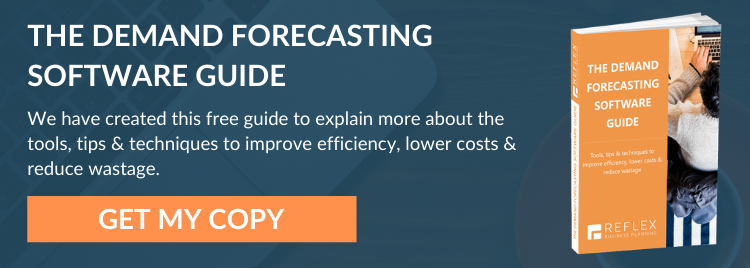This year, a large number of British B2C retailers will be looking to make up for lost time with a strong Q4 performance to offset months of poor trading and unprecedented falls in early-year customer spending.
However, a small, annoying, infectious, obnoxious being is still out there threatening Yuletide cheer – and it’s not one dreamt up by Dr Seuss.

The economic fallout, rising unemployment, and impending recession caused by the virus may take time to clear too – the OECD predicts a fall of c.-11.5% in UK GDP by 2021 even without a second wave (Financial Times, 10th June 2020). There’s also the potential issue of a drop in consumer confidence for businesses to contend with. Index figures will (probably) remain near a historic low of -30 during the months when consumers make critical decisions on Christmas presents (with some recovery towards early Q4).
How can you plan for seasonal demand against the backdrop of these distinctly un-festive figures, forecasts, and expectations?
Responsive demand forecasting and planning is one solution. By analysing key challenges and outlining on-the-fly and long-term measures with Reflex Planning, you can make the most of your opportunities, keep supply chains moving, and, potentially, save your Christmas – and that of thousands of others.
How Can Demand Planning, Analysis, and Forecasting Help Mitigate COVID-19’s Late Stage Effects?
Creating an effective strategy to keep sales buoyant during the winter of 2020 hinges on acknowledging that this Christmas is unlikely to be ‘business as usual’.
Many consumers have slashed spending on ‘non-essentials’ and may well be dealing with severely restricted household budgets. They may be saving for a rainy day – or for the resumption of normal life in 2021 (such as holiday flights).
Will you get the same level of footfall on the high street or your digital shopfront this year? Many customers will still be under lockdown and isolation measures during the closing months of the year – particularly if they’re older, disabled, or immunocompromised. Crowds still carry stigma.
There’s also the more human side of COVID-19 to carefully consider. People may not be able to meet relatives and friends in person to give them presents or celebrate. The death toll in Britain likely exceeds 65,000 people (FT). Many will have been ill, sadly lost friends, parents, and relatives, or know those who have – how jolly would they feel this year, given the circumstances?
COVID-19 is steadily dying off in England – but it isn’t dead quite yet. The NHS is preparing for a second wave and localised lockdowns, so you should be too. If you operate outlets or shops in urban areas, anticipate having to shutter them again quickly and without much prior warning.
On the positive side, sales of indoor, sedate leisure products (such as books), DIY items, alcohol, and groceries have all increased during COVID-19. Digital streaming purchases and downloads have also risen in volume. Many retail outlets (particularly in clothing and fashion) have a glut of good surplus stock from Q2 warehoused and ready to go at record low retail prices, saving Q4 logistical costs and maybe buoying demand. How could you capitalise on these new opportunities?
And there are still routine, predictable things we can expect from Christmas 2020. Disruption to supply chains due to weather and the last-minute scramble from 20th December, for example.
Our Advice to Maximise Q4 Christmas Sales
- Research which products, sectors, and lines have sold best (post-April 2020) as well as which products consumers have stockpiled during COVID-19
- Plan for contingency with redundant and resilient systems
- Forecast expected reductions and increases in demand through software
- Offer (more) home deliveries, priority slots, and pickups
- Streamline and prioritise popular ranges and items to save money on unsold products
- Use your surplus, slow-selling, and excess stock from Q2-Q3 (if any) to offer quick-sale and special discounts to stretched customers
- Keep an eye on the news and government webpages for sudden events and any changes to lockdown/planned measures
- Project and adjust commodity prices to reflect a drop in ‘non-essential’ spending
- Try to maintain a respectful, appropriate, and sombre (not gloomy) tone in marketing and customer engagement
- Focus on the idea of it being safe to spend and shop at your business
Demand Forecasting from Reflex Planning
Our Reflex Planning stock control, supply chain optimisation, and digital demand monitoring and forecasting software helps retailers to enhance profits, improve retail fronts, and minimise human error. Visit our website or get in touch with us today to arrange a free product demo.

